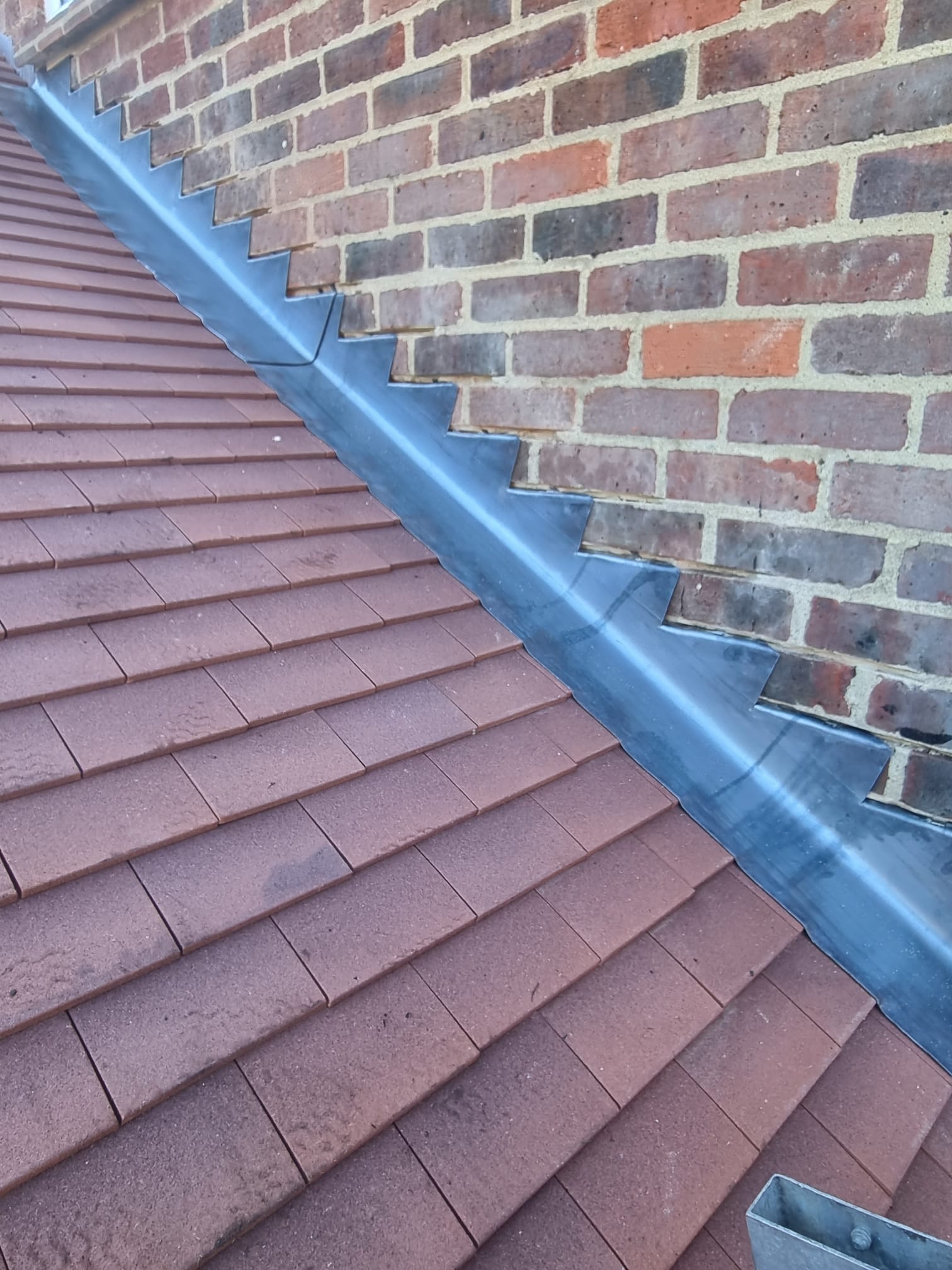+44 7853 968135
Is it better to repair gutters or replace them?
Making the right decision about your guttering system can save you thousands of pounds and protect your property from costly water damage. Whether you’re dealing with minor leaks or considering a complete overhaul, understanding when to repair versus replace gutters is crucial for every UK homeowner.
The choice between patching up existing gutters and investing in a full replacement depends on various factors including damage extent, material condition, and long-term cost implications. This comprehensive guide examines every aspect of gutter maintenance to help you make an informed decision that protects both your property and your budget.
When Should You Replace Rather Than Repair Gutters
Several clear indicators suggest that replacement offers better value than ongoing repairs. Widespread rust across multiple sections, frequent blockages despite regular cleaning, and visible sagging typically signal that your guttering system has reached the end of its effective lifespan.
Professional contractors generally recommend complete replacement when repair costs exceed 50% of new installation expenses. Multiple simultaneous issues, such as loose brackets combined with corroded joints and damaged fascia boards, often make replacement the most economical long-term solution.
The age factor plays a particularly significant role in this decision. Cast iron systems installed before 1960 may continue serving effectively for decades with proper maintenance, whilst uPVC gutters from the 1980s often require complete replacement due to UV degradation and material brittleness.
Need some Support with your Fascia and Soffits? Speak with a member of our Professional Fascia and Soffits Team here

How Much on Average Does it Cost to Replace Guttering?
Gutter replacement expenses vary considerably based on material selection, property size, and regional labour rates. Understanding these cost variations enables homeowners to budget effectively and make informed comparisons between repair and replacement options.
Professional gutter installation team working on UK property Alt text: Professional gutter installers working on residential property replacement project
Premium materials like copper command higher prices but offer exceptional longevity, whilst budget-friendly uPVC provides reliable performance at significantly lower initial investment. Labour costs typically represent 40-60% of total project expenses, with additional charges for scaffolding access and waste disposal.
Regional pricing differences can be substantial, with London and Southeast England commanding premium rates compared to Northern regions. Complex rooflines featuring multiple corners, bay windows, or decorative elements may increase installation costs by 25-40% above standard pricing.
Complete Breakdown of UK Gutter Material Costs
Understanding material costs helps you evaluate whether extensive repairs justify the expense compared to complete system replacement. Each material offers distinct advantages and price points that suit different property requirements and budgets.
| Material Type | Cost per Linear Metre | Average 3-Bed House (35m) | Expected Lifespan |
|---|---|---|---|
| uPVC | £18-28 | £630-980 | 15-25 years |
| Aluminium | £28-45 | £980-1,575 | 20-30 years |
| Cast Iron | £45-85 | £1,575-2,975 | 50-100 years |
| Copper | £65-110 | £2,275-3,850 | 80+ years |
These figures include materials only, with professional installation adding £25-40 per linear metre depending on complexity and regional rates. Properties requiring specialist access equipment or extensive fascia board repairs may incur additional charges of £500-1,500.rrosion, frequent blockages, sagging sections, or water damage to fascia boards. Additionally, older systems may lack the capacity to handle increasingly intense rainfall patterns associated with climate change, making replacement a prudent investment in property protection.
Is Replacing Gutters Worth it?
Replacing gutters delivers substantial long-term benefits that often justify the initial investment, particularly when existing systems show signs of widespread deterioration. Modern guttering materials offer superior durability, reduced maintenance requirements, and enhanced weather resistance compared to older installations.
The improved water management provided by new guttering systems protects your property’s foundation, prevents damp problems, and maintains the structural integrity of external walls. These protective benefits translate into significant cost savings by preventing expensive remedial work that results from inadequate rainwater management.
Contemporary gutter designs also enhance property aesthetics and potentially increase market value. Estate agents frequently cite well-maintained external features, including guttering, as factors that influence buyer perception and property valuations during sales negotiations.
How Often Should Guttering be Replaced?
Guttering replacement frequency depends heavily on material composition, installation quality, and maintenance practices throughout the system’s operational life. Understanding typical lifespan expectations helps homeowners plan for future replacement costs and identify when repairs become economically unviable.
| Material Type | Expected Lifespan | Replacement Indicators |
|---|---|---|
| uPVC | 15-25 years | Cracking, sagging, joint failures |
| Aluminium | 20-30 years | Corrosion, bracket failure, denting |
| Cast Iron | 50-100 years | Rust, structural weakness, joint deterioration |
| Steel | 25-40 years | Rust patches, coating failure, warping |
Environmental factors significantly influence replacement timing, with coastal properties experiencing accelerated corrosion due to salt exposure, whilst urban areas may suffer from increased pollution damage. Properties surrounded by large trees typically require more frequent replacement due to impact damage and increased debris accumulation.
Regular maintenance extends guttering lifespan considerably, with annual cleaning and inspection potentially adding 5-10 years to system operational life. The UK government’s guidance on home maintenance emphasises the importance of proper gutter maintenance in preventing property damage and reducing insurance claims.
Professional inspections every 3-5 years help identify replacement needs before emergency situations arise. Early identification of replacement requirements allows homeowners to plan financially and schedule work during optimal weather conditions, reducing project costs and minimising property disruption.
Professional Assessment and Installation Considerations
Engaging qualified professionals ensures accurate assessment of repair versus replacement needs whilst guaranteeing installation quality that maximises system longevity. Certified gutter specialists possess the expertise to identify underlying issues that inexperienced observers might overlook, potentially saving significant costs through early intervention.
Professional installation includes comprehensive fascia board inspection, ensuring adequate support structures exist before new guttering attachment. This thorough approach prevents premature system failure and protects your investment through proper mounting and alignment procedures.
The installation process typically requires 1-3 days depending on property size and complexity, with professionals coordinating scaffolding, material delivery, and waste removal. Quality contractors provide comprehensive warranties covering both materials and workmanship, offering peace of mind and protection against defective installations.
Determining the Best Choice for Your Property
Making the optimal decision between repairing and replacing gutters requires careful evaluation of multiple factors specific to your property and circumstances. Age, condition, and material type represent the primary considerations, but budget constraints and future property plans also influence the most appropriate choice.
Consider replacement when facing multiple repair issues simultaneously, as cumulative costs often exceed replacement expenses whilst delivering inferior long-term results. Additionally, properties approaching sale should prioritise replacement to maximise market appeal and prevent potential buyer concerns during surveys.
The key factors to consider include:]
Need Help with Guttering? Talk to one of our Professional Guttering Experts today!
Is it Better to Repair Gutters or Replace Them: Frequently Asked Questions
Signs indicating replacement needs include widespread rust, multiple leaks, sagging sections, or frequent blockages caused by structural damage. If repair costs approach 50% of replacement expenses, or if you’re addressing the same issues repeatedly, replacement typically offers better value.
uPVC guttering offers the best balance of affordability, durability, and maintenance requirements for most UK homes, costing £15-25 per linear metre. Whilst aluminium and cast iron provide superior longevity, uPVC delivers 15-25 years of reliable service at significantly lower initial investment.
DIY gutter replacement is possible for experienced homeowners but requires proper equipment, safety knowledge, and understanding of building regulations. Professional installation ensures compliance with warranty requirements and provides expertise in fascia board assessment, which prevents costly future issues.
Most residential gutter replacement projects require 1-3 days depending on property size and complexity. Factors affecting timeline include weather conditions, access requirements, and any necessary fascia board repairs discovered during installation.
Delaying essential gutter replacement risks water damage to foundations, external walls, and internal structures, potentially costing thousands in remedial work. The UK government’s flood guidance emphasises proper drainage maintenance as crucial for property protection.
uPVC gutters require annual cleaning and inspection, whilst cast iron systems need bi-annual maintenance including rust treatment. All materials benefit from regular debris removal and joint inspection, but metal systems require additional corrosion monitoring.
Seek contractors with relevant trade certifications, comprehensive insurance, and established local reputation through customer reviews. Multiple quotations help ensure competitive pricing, whilst warranty provisions indicate contractor confidence in workmanship quality.
Reputable contractors typically provide 10-15 year material warranties and 2-5 year workmanship guarantees. Extended warranties often indicate superior material quality and installation confidence, providing valuable protection for your investment.
UK building regulations require adequate rainwater drainage capacity and proper connection to existing drainage systems. Local authorities may have specific requirements for conservation areas or listed buildings, necessitating planning permission consultation.
Whilst gutters don’t directly impact energy efficiency, proper rainwater management prevents damp issues that compromise insulation effectiveness. Well-maintained guttering systems support overall building envelope performance by protecting external wall integrity.
Late spring through early autumn provides optimal conditions for gutter replacement, avoiding winter weather complications and ensuring adequate drying time for sealants. However, emergency replacements shouldn’t be delayed regardless of season to prevent property damage.
Regular cleaning every 6-12 months, prompt repair of minor damage, and annual bracket inspection significantly extend gutter lifespan. Professional maintenance contracts ensure consistent care and early problem identification, protecting your replacement investment.
Gutter replacement often reveals fascia board damage requiring repair or replacement, adding £15-30 per linear metre to project costs. Additionally, downpipe repositioning or drainage connection modifications may be necessary to meet current building standards.
Upgrading to higher capacity guttering is often advisable, particularly for properties with large roof areas or frequent overflow issues. Proper sizing prevents overflow damage and ensures adequate rainwater management for your specific property requirements.

